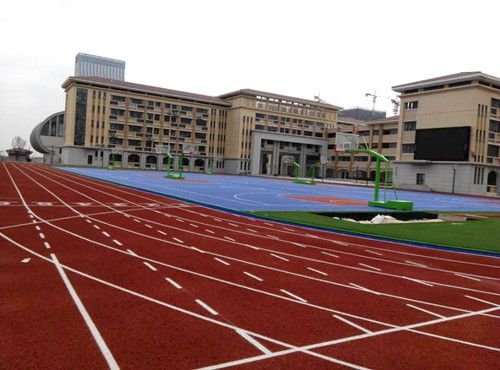How the acoustic environment impacts on school building design?
It is well known that indoor space noise levels are too high or reverberation time is too long, which can adversely affect users in the space. In a study
published in the British journal Psychology, testers were asked to complete two simple tests in a quiet environment and simulated office noise environment;
1) Read and recall an essay;
2) Perform a simple mental arithmetic. The study found that the accuracy of subjects completing tasks was reduced by 67% in the latter environment; and
57% of the testers clearly indicated that their attention was disturbed by background noise.

Statistics from the US General Accounting Office (GAO) also show that more than 28% of primary and secondary school students and teachers endure
unsatisfactory noise in the United States. Among the 21,900 schools surveyed, students and teachers were more dissatisfied with the classroom acoustic
environment than ventilation (27.1%), safety (24.2%), indoor air quality (19.2%), and temperature (18.9%). And the degree of dissatisfaction with lighting (15.6%).
In fact, the harsh acoustic environment can also adversely affect the health of the user. The World Health Organization (WHO) has confirmed through extensive
epidemiological studies that there is a link between environmental noise and impaired health in the population exposed to it. Excessive environmental and road
noise can lead to an increased risk of cardiovascular disease, including myocardial infarction.

This shows that the acoustic performance of buildings and the environment is not only related to the comfort experience of the people in use, but also has a
major impact on people's behavior and health. It is for this reason that the acoustic indicators of buildings, especially school buildings, are more strictly
regulated in the newly released US Green Building Certification System LEED V4:
The background noise of the HVAC air conditioning system must be limited to 40 decibels (A-weighted).
Reverberation time requirements for classrooms or learning spaces larger than 20,000 cubic feet are in accordance with the 2002 NRC-CNRC Construction Technology
Update No. 51, Acoustic Design for Speech.Reverberation time less than 20,000 cubic feet in classroom or learning space should be controlled at 0.6 seconds or less.

The building acoustics sub-item has also been extended from the previous version only to teaching buildings to all new buildings, data centers, warehouses and
distribution centers, hotels, commercial cores. In addition to the design phase, LEED certification for the operational and maintenance phases of buildings also
requires acoustic assessment. So in this case, how to consider their acoustic design when you want to apply for LEED-certified school buildings?
First, a professional acoustic expert is required; the requirements of the LEED V4 standard can be translated into specific technical parameters based on familiarity
with local acoustic standards. Secondly, when carrying out the specific acoustic design, special attention should be paid to the three acoustic performance requirements
of background noise (HVAC), sound insulation level (STC) and reverberation time (RT) in school buildings.
At the same time, it is more important to pay attention to the requirements of acoustic conditions in the selection of teaching building size and shape design, building
materials and interior decoration materials. For example, when selecting ceilings, wall panels or flooring materials, ensure that the noise reduction coefficient of the
corresponding product is NRC ≥ 0.70.
As a global leader in indoor building systems, Leeyin sound-absorbing panels have excellent sound absorption performance, which can greatly reduce indoor reverberation
time and improve speech intelligibility. Professional Acoustic Design Centers in the US and Shanghai offer tailored building acoustics solutions worldwide and in the Asia
Pacific region. At the same time, Leeyin Acoustics can also provide products and related technical materials that meet CE certification and China Green Building Samsung
certification, and provide professional advice and advice.
Copyright © Guangdong Liyin Acoustics Technology Co., Ltd. All Rights Reserved Sitemap Powered by 
